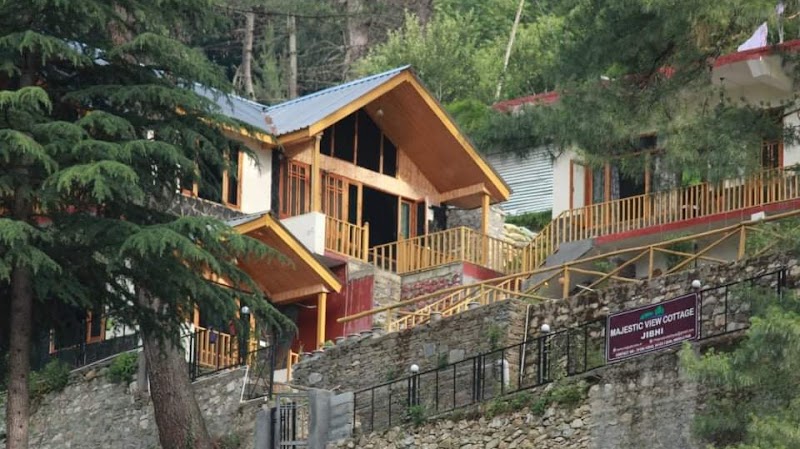Trekking the Great Himalayan National Park: A Practical Adventure through Banjar’s Wild Heart
Trek through the Great Himalayan National Park near Banjar for a hands-on encounter with untamed Himalayan wilderness. This UNESCO site welcomes adventurers with varied terrain, rich biodiversity, and thrilling panoramic views, offering a trek that’s as educational as it is exhilarating.
Start Early to Avoid Afternoon Showers
Begin your hike at dawn to maximize daylight and avoid sudden mountain rains common in the afternoon during summer months.
Bring a Water Purification Method
Although mountain streams provide ample water, always carry filters or purification tablets to avoid waterborne illnesses.
Wear Waterproof, Sturdy Footgear
The trails transition from mossy forest floors to rocky ascents; waterproof boots with good ankle support prevent injuries and keep feet dry.
Hire a Local Guide
Trails can be poorly marked and conditions changing; a knowledgeable guide enhances safety and enriches your experience with insights about the park’s flora and fauna.
Trekking the Great Himalayan National Park: A Practical Adventure through Banjar’s Wild Heart
The Great Himalayan National Park, located near Banjar in Himachal Pradesh, India, offers a trekking experience where raw nature meets purposeful challenge. This UNESCO World Heritage Site stretches over 1,171 square kilometers, boasting rugged trails through dense forests, alpine meadows, and sharp ridges that rise up to 3,000 meters. As you step onto the trail from Banjar, the forest canopy leans in, whispering secrets of ancient cedars and rhododendrons that sway like sentinels guarding this fiercely wild terrain.
A typical trek covers 15–20 kilometers per day with elevation gains of 500 to 800 meters, depending on your route and pace. The terrain varies from soft forest floors damp with moss, to rocky slopes where rivers dare you to cross on slippery stones. Water sources are frequent but always test before drinking or treat accordingly. Trails lead you to panoramic viewpoints where the mountains stretch like sleeping giants under a shifting sky.
The park shelters over 375 species of Himalayan flora and fauna, including elusive snow leopards and Himalayan brown bears, always reminding trekkers that they are guests in a living ecosystem with its own rules and rhythms. Birdsong fills the air, punctuated by the distant call of the Himalayan monal, inviting you to pause and listen.
Preparation is key. Starting early maximizes daylight and gives you a buffer against sudden weather changes. Sturdy, waterproof trekking shoes are essential for traversing fluctuating terrain. Carry layered clothing to adapt to freezing mornings and warmer afternoons. Hydration packs and energy-rich snacks keep energy levels steady while minimizing stops.
Best approached with a guide familiar with the trails, the trek balances adventure with safety. Navigation isn’t always straightforward—maps can be outdated and signage minimal. Respect for local regulations and conservation efforts preserves the fragile environment and ensures the park’s wild spirit endures.
Trekking here is a conversation with the land — sometimes quiet, sometimes demanding — but always real and immediate. Whether you’re a seasoned trekker or someone seeking to move beyond a familiar path, the Great Himalayan National Park offers an adventure that engages your senses and tests your resolve in equal measure.
Nearby Trips
All Adventures
Boat Charters
Water Activities
Adventures near Banjar
Discover the unique and memorable adventures that make Banjar special.
Frequently Asked Questions
Do I need a permit to trek in the Great Himalayan National Park?
Yes, all trekkers must obtain permits from the local forest department office in Banjar. These help regulate visitor numbers and support conservation efforts.
Is the park safe from wildlife encounters?
While encounters with large animals like snow leopards or bears are rare, they are part of the park’s ecosystem. Follow your guide’s advice, avoid hiking alone, and store food securely.
What level of fitness is required for trekking here?
A good level of cardiovascular fitness and stamina is necessary due to steep ascents and varying altitudes ranging up to 3,000 meters.
Are there any facilities along the trekking routes?
Basic lodging and tea houses exist near Banjar, but within the park, facilities are minimal. Be prepared to camp or carry enough provisions for multi-day treks.
When is the best time to visit the park for wildlife viewing?
Late spring and fall are best for spotting wildlife, as animals are more active during cooler hours and the visibility is better due to clear skies.
Can beginners attempt treks in this park?
Beginners can attempt shorter, less steep routes near Banjar, but multi-day expeditions demand previous trekking experience and physical preparation.
Recommended Gear
Waterproof Hiking Boots
Protects feet on wet and uneven surfaces, crucial for navigating streams and rocky paths.
Layered Clothing
Allows quick adaptation to temperature swings from cool mornings to warm afternoons.
Water Purification Tablets or Filter
Ensures safe drinking water from natural sources along the trail.
Trekking Poles
Reduces strain on knees during steep ascents and when crossing slippery riverbeds.
Local Insights
Hidden Gems
- "The remote Munday Gur glacier viewpoint offers sweeping views rarely seen by visitors."
- "Chiltu’s meadow presents a quiet spot abundant with wildflowers and an excellent birdwatching location."
Wildlife
- "Keep an eye out for the Himalayan monal, a vibrantly colored pheasant and Himachal Pradesh’s state bird."
- "The elusive musk deer hides deep in the forests, its scents marking territory during dawn and dusk."
History
"The park’s boundaries were formalized in the 1980s to protect its unique wildlife and habitats, incorporating traditional grazing grounds of local communities whose stewardship continues today."

